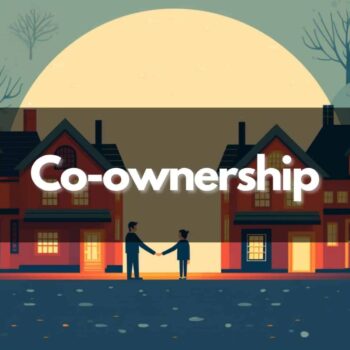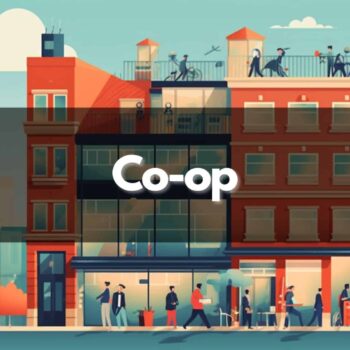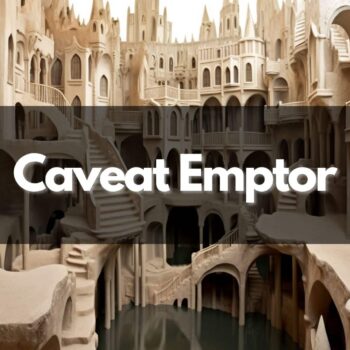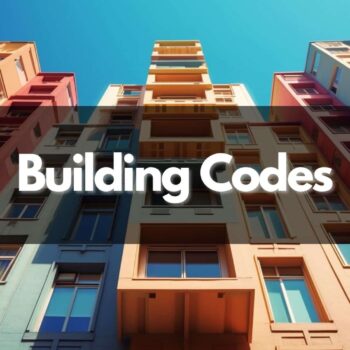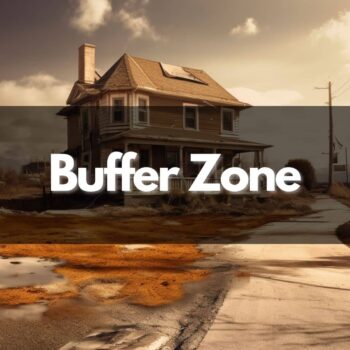This article will help you understand the difference between real and personal property. We will also define the bundle of legal rights, fixtures, trade fixtures, and more. But first, some important context.
Bob owns a parcel of land in a quiet gated community. The land has a house, a driveway, a swimming pool, a vegetable garden, and a cedar tree in the backyard. Bob also owns a blue pick-up truck; he parks it on his driveway.
Remember Bob; you’ll be hearing a lot from him.
What is Real Property?
Real property is all things attached to the land and its legal rights. From the example in the introductory paragraph, the house, the driveway, the pool, and all the plants are real property because they are attached to the ground.
Real property includes:
- The land on which the property stands on
- The improvements on the land
- The bundle of rights that comes with the property
Land
In real estate, land is defined as the earth’s surface extending down to the earth’s core and upwards to infinity. A tract, lot, or parcel is a land sectioned off by boundaries. We use these terms interchangeably when discussing land.
Land includes:
- Natural minerals beneath the surface
- The air on or above the surface
- Water on or below the earth’s surface
Characteristics of Land
Land has eight physical and economic characteristics.
The physical characteristics of land include immobility, indestructibility, and heterogeneity.
- Immobility: You cannot ship land and move it to a new location. Land is immobile.
- Indestructibility: You cannot destroy land. You can scoop up dirt beneath the surface, and you will still have more dirt to scoop.
- Heterogeneity: Each tract of land is unique and different from the next. Two plots of land adjacent to each other with the exact measurements will always differ. Each plot will have different views of the surroundings.
The economic characteristics of land include utility, scarcity, demand, transferability, and situs.
- Utility: You can use land for residential, commercial, industrial, agricultural, and special purposes.
- Scarcity: Land is a scarce commodity. There is only so much land in the country to go around.
- Demand: Due to scarcity, the demand for land keeps rising.
- Transferability: Land is transferrable from one party to another.
- Situs: Situs means area preference. People prefer to live in certain areas over others. The preference could be due to convenience, history, or reputation. For example, an area with low crime rates will attract buyers.
Improvements
Improvements include all the artificial structures permanently attached to the land. Bob’s house, swimming pool, landscaping, driveway, and sewer system are improvements. Improvements are physically attached to land and are considered real property.
Fructus naturales include all planted or naturally growing herbs, shrubs, trees, and other plants. Bob’s vegetable garden and cedar are real property. Ownership of Fructus naturales passes on with the sale of the property.
Bundle of Rights
Real property ownership also includes the bundle of rights, benefits, and interests inherent to the property. Five rights come with real property ownership. To help you remember, think of the acronym DEEP-C.
Below are the privileges included in the bundle of rights
- The Right of Disposition (D): Bob has a right to convey property ownership to another party.
- The Right of Enjoyment (E): Bob has a right to use the property for any lawful purpose.
- The Right of Exclusion (E): Bob has the right to control access to the property.
- The Right of Possession (P): Bob has a right to live on the property.
- The Right of Control (C): Bob has the right to build, modify, destroy, or rent the property to another party. This right also empowers the owner to make all legal decisions about the property.
What is Personal Property?
Personal property includes ownership of anything that is not real property. Bob’s blue pick-up truck is his personal property. Other examples of personal property are furniture, lawnmowers, personal computers, and TV sets.
Characteristics of Personal Property
There are two characteristics of personal property; mobility and transferability.
- Mobility: Personal property is movable. For example, Bob can move his car wherever he wants. It’s not attached to the property.
- Transferability: Personal property is transferable through a bill of sale from one person to another. For instance, Bob can sell his truck. He can also gift it to his son.
Types of Personal Property
Personal property exists in two forms; tangible and intangible property.
Tangible Personal Property
Tangible property is visible, physical, and material. Tangible physical possessions are movable items. The examiner may refer to tangible property as chattels on your real estate license exam.
Chattels include possessions like furniture, automobiles, and livestock. Chattels are also subject to personal property taxes. Chattels attached to real estate become part of that real property. We refer to this tangible property as fixtures. More on fixtures later.
To help you remember, here is a mnemonic device:
The word chattel sounds like cattle. Cows say “moo.” A cow’s wail sounds like the word move; movable property.
Sounds ridiculous? Trust me, the phrase, “Chattel, cattle, cow, moo, move, personal property,” is a lifesaver. Memorizing this mnemonic device will help you ace your real estate license exam.
Intangible Property
Intangible personal property is abstract. Intangible property has no physical existence other than as evidence of the owner’s interest. Examples of intangible property include intellectual property, bank accounts, investments, franchises, and licenses.
Intangible property exists as a category to represent the legal rights of non-physical property.
What’s the Difference Between Real and Personal Property?
Real property is attached to land, while personal property is not. Bob’s house, vegetable garden, driveway, and trees are real property because they are attached to his land. His truck is his personal property, and it’s not attached to the land.
Personal property is movable, while real property is immovable. For example, Bob’s truck is personal property because he can move it. Bob cannot move his house because it is attached to the land.
Real property is included in the sale of land, while personal property is not. For example, Bob decides to sell his land and move into another property. The house swimming pool, trees, driveway, and garden are included in the sale. The truck and all movable items in the house will move with Bob.
Both real and personal property are transferrable. Bob has the right to sell or gift his land and everything attached to it. He can also sell his car, furniture, and household appliance.
Real and personal property can both include intangible items. The bundle of rights cannot be seen or touched, yet they are part of Bob’s real property. Bob’s life insurance lacks a physical form, yet it is his personal property.
Can Property Status Change?
Yes. Real property can change to personal property through severance. Personal property can change to real property through annexation.
Severance
Severance is the act of turning real property into personal property. Bob’s cedar tree is his real property because it grows in his backyard. One day, Bob decides to chop the tree into firewood. Bob has severed the tree from his land. He has turned immovable real property (tree) into movable personal property (firewood).
Annexation
The root word of annexation is “annex,” which means to add. Annexation is the act of turning personal property into real property.
For example, Bob decides that he needs a shed in his backyard. He jumps in his truck and drives to the hardware store. He buys a hummer, a saw, some lumber, and nails and loads them on the back of his truck.
While on the back of his truck, the supplies are Bob’s personal property. As soon as he completes constructing the shed, the structure becomes real property. The structure is attached to the ground, and the shed is immovable.
Should Bob sell his land, the shed is included in the sale. The hammer and saw he used on the construction job move with him as they are his personal property.
What are Fixtures?
A fixture is any object permanently attached to real property through screws, bolts, cement, glue, or other means. A fixture is a chattel that becomes real property due to its association with the property.
One classic example of a fixture is a toilet set. A toilet starts as personal movable property. As soon as the installation is complete, it becomes immovable real property. Air conditioning units, chandeliers, ceiling fans, and window treatments are examples of fixtures.
How to Identify Fixtures
There are five ways to tell if an object qualifies as a fixture. You can remember these qualifying factors with the acronym “MARIA.”
- Method of attachment (M): Does the object attach to the ceiling, wall, or floor using nails, glue, or cement?
- Adaptability (A): An item that is an integral part of the home qualifies as a fixture of the real property. A pool cover becomes a fixture because the cover is an integral part of the pool. The pool cover becomes real property even though you can fold it and tuck it away.
- Relationship of the Parties (R): If there is a dispute about whether an object is a fixture or not, the result can be different for a landlord/tenant relationship than it would be for a buyer/seller relationship.
- The Intention of the Party During Attachment (I): If the object was installed to make it a permanent attachment, the item becomes a fixture. For example, a built-in bookcase or a bathroom sink.
- Agreement between the Parties (A): Most purchase contracts contain a clause that defines what items are included with the sale. Any agreement between the buyer and the seller will override all factors determining whether or not an object is a fixture.
Trade Fixtures
A trade fixture is an improvement that is attached to real estate by a tenant. Trade fixtures are unique to the operation of the tenant’s business and not to the use of the building.
Like ordinary fixtures, trade fixtures are immovable objects attached to real property. Unlike regular fixtures, trade fixtures do not become part of the property. Trade fixtures are considered chattels. They go with the person or entity that owns the business where the fixture is installed.
For example, a barber rents a shop downtown. He installs a barber’s chair at the center of the shop. Even though the chair is bolted to the ground, it is his personal property. The chair will move with him if he decides to move his shop.
What to Know for the Real Estate Exam: Real Property vs. Personal Property
All property is either classified as real property or personal property. Real property includes land and all artificial structures attached to the land. Real property is immovable property. Personal property is ownership of anything that is not real estate and the rights associated with owning the property.
Property ownership includes the items owned and the rights enjoyed by the owner.
Personal property exists in two forms tangible and intangible personal property. While chattels are physical, intangible property is abstract. Tangible personal property is also known as chattels or personalty. Chattels include furniture, automobiles, and other tangible personal property.
The types and uses of real property are agricultural, industrial, residential, and commercial. Special-use real estate has a unique purpose for those who own or use it. Churches, hospitals, and schools are examples of special-use real estate.
A fixture is a personal property that has been converted to real property by attachment to real estate.
Trade fixtures are immovable items attached to real property that is considered personal property. Trade fixtures move with the owner should they decide to relocate.
There you go, a deep dive into real property vs. personal property. Studying these vocabulary terms can be tedious. Try out our real estate vocabulary flashcard app to understand other real estate terminology.
